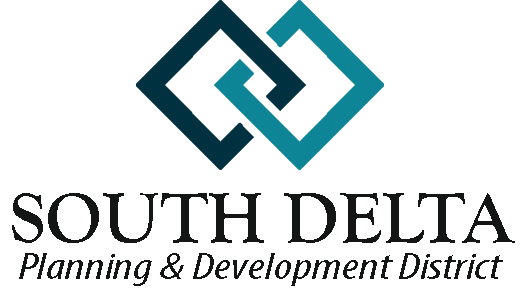Summary Background
INFRASTRUCTURE
WATER
The principal difference between the infrastructure of urban and rural areas is in the capacity of the water and sewer systems. Urban networks generally have a superior capacity per person in both quantitative and qualitative evaluations. Water supplies in the urban area are more reliable and have better treatment facilities. A greater amount is available on a per capita basis for domestic purposes and also for fire flows in emergency situations.
In addition to municipal water and sewer systems, there are water associations operating within the district to provide domestic water supplies to rural areas. Most of these were organized through the United States Department of Agriculture – Rural Development and were designed to furnish domestic needs only. In most instances, industrial uses of fire flow demands would be beyond the design capacity of such systems.
In accordance with the Federal Safe Drinking Water Act of 1996, the State of Mississippi has implemented a Capacity Development Program to improve the technical, managerial, and financial capacity of the state’s public water systems and to prevent the creation of new systems that do not have the technical, managerial, and financial capacity to comply with current and future provisions of the Act. Included in the requirements of the Act is the development of an annual report on all of the public water systems in the State of Mississippi. This report provides much needed information in the development of projects throughout the district. It not only indicates water production capacity but provides ratings to discern the capability of the system on the issues of technology, management and finances. These factors must be considered for projects to improve these water systems as well as for projects that rely on access to water. In addition to the changes in that are now required through

Mississippi’s Capacity Development Program, funding agencies have also taken steps to become better stewards of taxpayer funds by requiring water system viability prior to awarding funding.
Although the populated areas of the region are generally served by public water systems, these systems are aging and deteriorating to some degree. There may also, be some pockets of population that are too remote to be included in an organized water system and must rely on private wells for access to water. Many of the unserved areas surrounding municipalities or organized communities have been recently connected to existing systems. Those remaining will be connected as funding becomes available. One of the major concerns of the area is not access to water but, access to water systems that are technologically 30 sound, well managed and financially capable of remaining viable. The second, equally major concern is the aging components of the municipal water systems in the region. Many of these systems are beginning to experience catastrophic failures and have required major system improvements. These issues will continue to be at the forefront of infrastructure improvement planning for many years to come.
SEWER
Urban sanitary wastewater facilities have generally been characterized by more sophisticated treatment methods and consequently higher quality treated effluent. Most of the small towns in the district utilize lagoon treatment while the largest city uses a mechanical treatment plant. Several of the communities that were utilizing mechanical plants then changed to lagoon type treatment for cost savings are being forced to make plans to return to the mechanical systems. Constant changes in the permitted limits have caused this epidemic of back and forth on the issue of wastewater treatment. The wastewater systems within the area utilize mechanical treatment plants, lagoons, and overland flow systems. Many of the small communities in the region cannot meet the limits because
communities in the region cannot meet the limits because of location and environment. The outward flow of treated wastewater has to be released into under very strict guidelines to limit potential pollution. This includes outflow to streams that have a consistent flow of water. These streams can be miles from existing treatment facilities. This is an example of one regulatory hardship faced by small communities and utility districts. Many communities had discovered that the operation and management costs related to mechanical treatment was too high for their financial capacity thus turning them back toward a lagoon system only to find out that lagoon systems come with another set of financial hardships. Unfortunately, the choices for wastewater treatment are becoming very limited.
In the last decade, a number of the unincorporated communities in the district have formed utility districts, which allowed them to provide sewer service to area residents. These systems are going to face the same uncertain future as the municipal systems and may have to return to a form of septic system for their wastewater service needs.
More and more information on the health hazards of poor wastewater handling is being disseminated to the public. As this happens more communities are seeking ways to improve their quality of place and the human condition of their area. Additionally, the changes to discharge requirements implemented by the Environmental Protection Agency will bring about the need to revisit wastewater systems that have recently been addressed. Efforts to 31 assist both units of local government and unincorporated communities in identifying funding for addressing these issues must continue. These efforts are not only vital to maintaining a healthy populace but also in attracting people and business opportunities to the region.
TRANSPORTATION
The South Delta area has a multi-modal transportation network capable of handling almost any type of cargo. Proximity to the Mississippi River makes water transportation of bulk materials possible. The public ports at Greenville and Rosedale offer shippers the opportunity to import or export large volumes of goods to regional, national or international markets. Numerous industrial port facilities also line the harbor front. Unfortunately, both of these port facilities are full and no longer have useable land available to offer industries wishing to locate at the ports.
The remainder of the transportation system in the district is characteristic of the State as a whole. The principal north-south and east-west thoroughfares are U. S. Highways 61 and 82. Greenville, the largest city in the district, is the site of the relatively new Highway 82 Bridge and the recently funded by-pass that will skirt the south end of the City of Greenville and rejoin Highway 82 at Leland. Greenville has one of the four bridges in the state that crosses the Mississippi River. The crossing currently gives Greenville a locational advantage because of its exposure to larger volumes of traffic and its access to a greater regional trade area. Highway 61 passes through Leland, which is eight miles to the east of Greenville. A secondary roadway network that serves even the smaller communities with paved access roads complements the primary thoroughfares. The counties build and maintain a network of farm-to-market roads that are either paved or gravel surfaced. This operation is assisted by both State and Federal funds, but the county provides the manpower and management.
The South Delta Region, just like the remainder of the state, is experiencing a critical situation on the farm-to-market roads serving the area. Based on the current criteria and inspections conducted by the Federal Highway Administration, there has been a major focus on rehabilitating or reconstructing timber bridges located within the six-county south delta footprint as quickly as possible. The number of bridges to be addressed will likely rise as rounds of inspections are completed. The long-range plan is to rehabilitate or reconstruct these timber bridges with concrete pilings or concrete box culverts as each bridge situation dictates. The current timber bridges, although some are 60 or 70 years old, outlived their
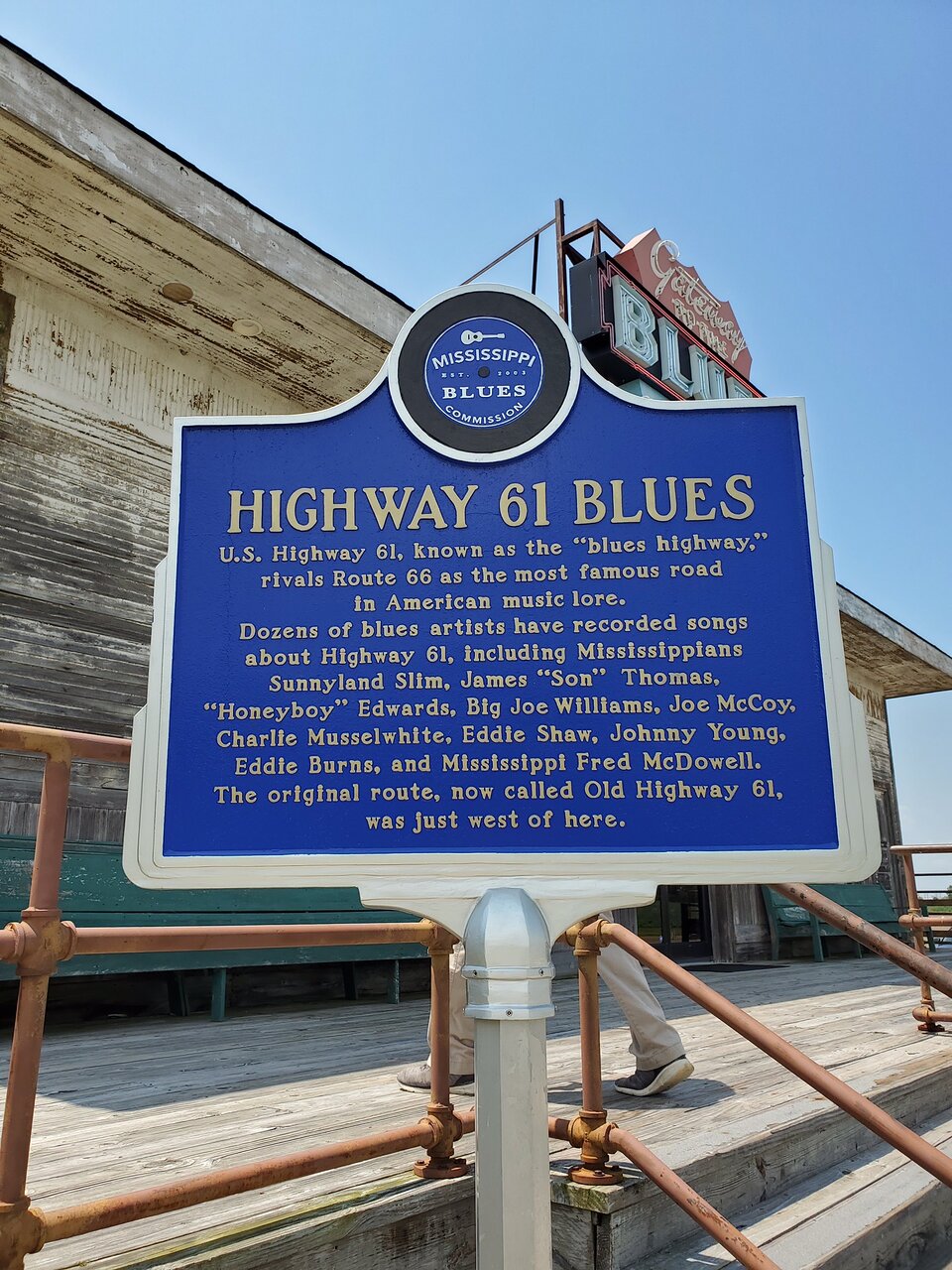
design life at around 30 or 40 years. Concrete components, with care and maintenance, could possibly double the design life of these bridges.
A proposal for another bridge over the Mississippi River has been approved as part of the construction of Interstate 69 (I-69) an intercontinental highway linking Canada, the United States and Mexico. It appears that the most likely route for I-69 will be through southern Bolivar County and to the north of the City of Greenville. Greenville has been identified as a location requiring further study for access and connectivity. The location of I-69 and any connector routes through the South Delta Planning and Development District would have a major economic impact on the region.
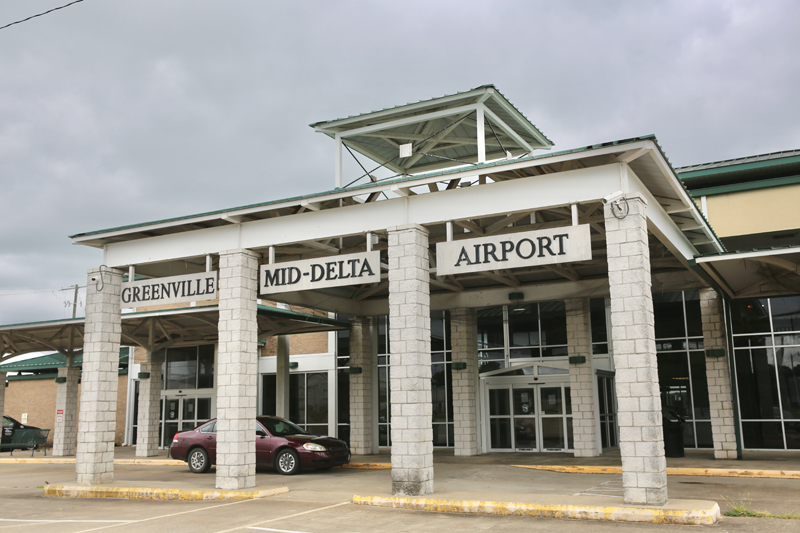
The only commercial airport in the district is located in Greenville, which is within 75 miles of any point in the district. The regularly scheduled commercial flights are regionally oriented, providing a commuter style connection to both Nashville, TN and Dallas, TX. The service provided by the latest flight partner of the Greenville Mid-Delta Airport has been such a vast improvement that the airport has passed year one of two of over 10,000 enplanements. Reaching the two-year goal would reinstate funding from the FAA to the airport. Additionally, the Greenville Mid-Delta Airport, a former Air Force training facility, with over 300,000 sq. ft. of empty hangar space is the target of a number of improvement projects in order to take advantage of the available hangar space for economic development purposes. The other airport of significance in the region is located at the City of Cleveland and serves both the City and Delta State University’s Commercial Aviation degree program. The Cleveland Airport is expanding and building new
hangar space to accommodate a new agricultural pilot training program. The Greenville Airport and the Cleveland Airport will be partnering on some activities related to the agricultural pilot training programs.
The Genesee and Wyoming Railway, formerly known as the Columbus and Greenville, provides the South Delta District with rail-freight service. The Genesee and Wyoming is an east-west railway that once crossed the entire state. Now the railway only provides service from Greenville to Greenwood. This service is marginal
hangar space to accommodate a new agricultural pilot training program. The Greenville Airport and the Cleveland Airport will be partnering on some activities related to the agricultural pilot training programs.
The Genesee and Wyoming Railway, formerly known as the Columbus and Greenville, provides the South Delta District with rail-freight service. The Genesee and Wyoming is an east-west railway that once crossed the entire state. Now the railway only provides service from Greenville to Greenwood. This service is marginal at best considering the current track conditions. The Great River Railroad, although still in existence, is no longer in operation. Rail access to industrial sites is currently very limited. The Great River Railroad has been the focus of an effort to find funding for revitalization of the north south connector that would serve the growing Port of Rosedale and connect to the east west rail access at Greenville.
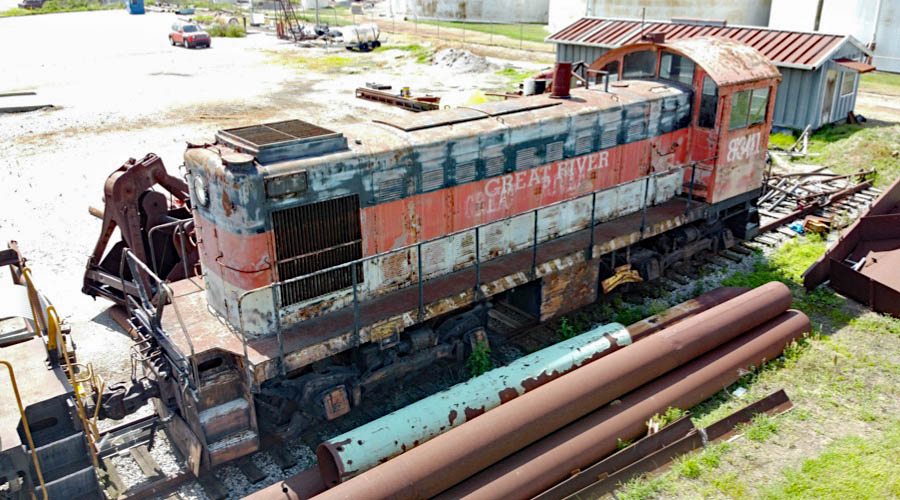
Transportation facilities in the South Delta region must continue to be improved upon in order for the area to be competitive with the state, the nation and the world. Every component of the transportation system within the district needs improvement. Some, like the 33 Port of Greenville and the Rosedale-Bolivar County Port, have taken steps to improve their facilities and the services offered. However, both of these port facilities have many more improvements that could be made, not the least of which is taking the steps necessary to open more land for development.
Air transportation and airport facilities, should continue to be at the forefront of improvement considerations. An area that does not have access to a functioning commercial airport will not be considered for business location over an area that does. Therefore, it is imperative that the Greenville Mid-Delta Airport be maintained at its current level of service and improved with every opportunity. These improvements should include complete renovation of the existing hangars, construction of new hangars and construction of a new Fixed Base Operator (FBO) facility.
Rail service in the district is not even remotely close to the level necessary to make this area a viable option for business location or in support of business that has located elsewhere in the state. The Great River Railroad, that provided service from the Port of Rosedale to a junction with the Genesee and Wyoming in Leland, is currently not in operation due to age and deterioration of the equipment and rails. The Great River Railroad is actively seeking opportunities to rehabilitate the line. The Genesee and Wyoming has shut down service beyond Greenwood. With the location of the Toyota plant at Tupelo, the aluminum plant in Columbus and the steel mill in Columbus, it is critical that the South Delta region have rail access to the eastern side of the state. Plans must be made for the future to keep access to rail service in South Delta area. Even though rail traffic has been very light in recent years, the total loss of rail service would be highly detrimental to economic development in the area.
INDUSTRIAL PARKS & SITES
Nine local governments in the district – Greenville, Cleveland, Indianola, Shelby, Rosedale, Belzoni/Humphreys County, Rolling Fork, Issaquena County and Hollandale – have organized industrial parks. Several smaller communities have industrial sites reserved and serve those sites with utilities, but they are not of a scale that would classify them as industrial parks.
Light and heavy industries are located throughout the district and their contribution to the economic growth of the district has been considerable. The total land area presently occupied by industrial users is very small with the greatest concentration being in Greenville, Cleveland and Indianola. The larger communities are better able to support the needs of 34 most manufacturers. Consequently, it can be anticipated that their dominance of attracting new industries in the district will continue.
Currently the only shortage of industrial development space within the district is at the Port of Greenville and the Rosedale-Bolivar County Port. All other industrial parks and sites have land available for development. Most of these sites are served with the necessary infrastructure. However, some of the infrastructure serving these industrial parks is beginning to age considerably and some has been surpassed by the needs of industries currently being served. Future efforts must include upgrading and maintaining existing industrial parks and sites. This is especially true in light of the current Delta Strong efforts to focus on smaller
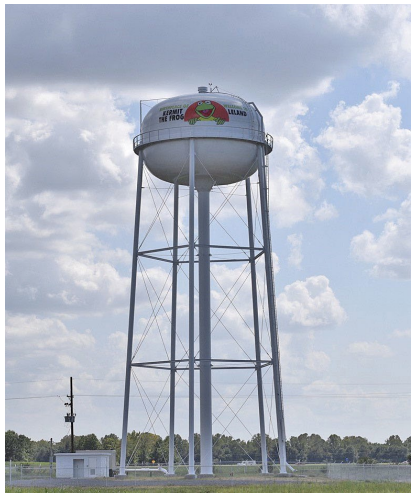
Highways 61 and 82 Industrial Park, Leland, Missisippi
manufacturing recruitment. Beyond this, efforts must focus on the development of larger regional industrial development areas designed for the larger type of industry such as an automotive manufacturing facility. This need not be the first item of business but as I-69 continues toward completion it should be addressed.
WATER RESOURCES
One of the primary natural resources of the district is the water supply. In addition to the Mississippi River, which forms the western border of the district, underground aquifers have provided domestic water supplies of very good quality. Lakes and ponds provide numerous opportunities for water-oriented recreation as well as aesthetic enhancement of building sites.
The port terminals at Greenville and Rosedale provide excellent access to water transportation of cargo for the entire district. Passenger access at the City of Greenville waterfront and at Terrene Landing in Bolivar County is bringing about a renewed focus on the Mississippi River’s role in tourism. Partnerships with the American Queen and Viking River Cruises are now bringing tourists to the area on a regular basis.
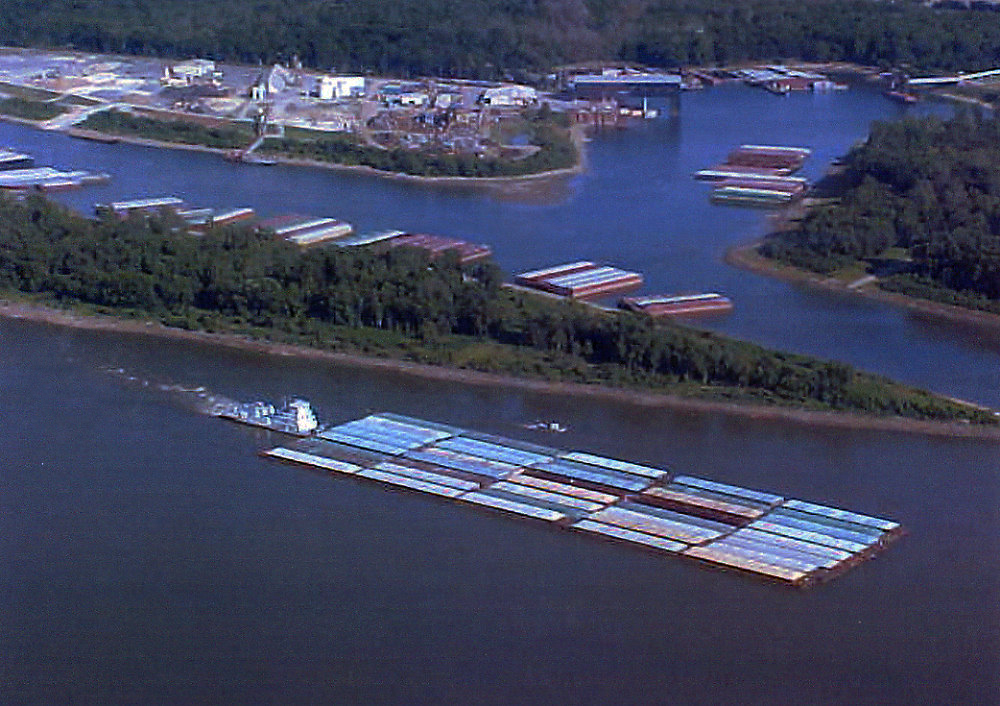
As both the Port of Greenville and the Port of Rosedale have reached capacity in land area available for development, expansion projects are at the forefront of future planning activities for the region. As with all new major construction projects in the South Delta area, will have careful environmental evaluations in order to assess the impact of the projects on their surroundings. In order to assure the continued potential of the district’s natural resources for future generations, it is imperative that our present action be consistent with conservation goals for the future. Additionally, future activities of this nature will be planned to minimize negative impacts and maximize resilience. Specifically, related to port expansion areas, lands dedicated to future development at either port will be raised to a level equal to the height of the existing levee to minimize the impact of river flooding.
